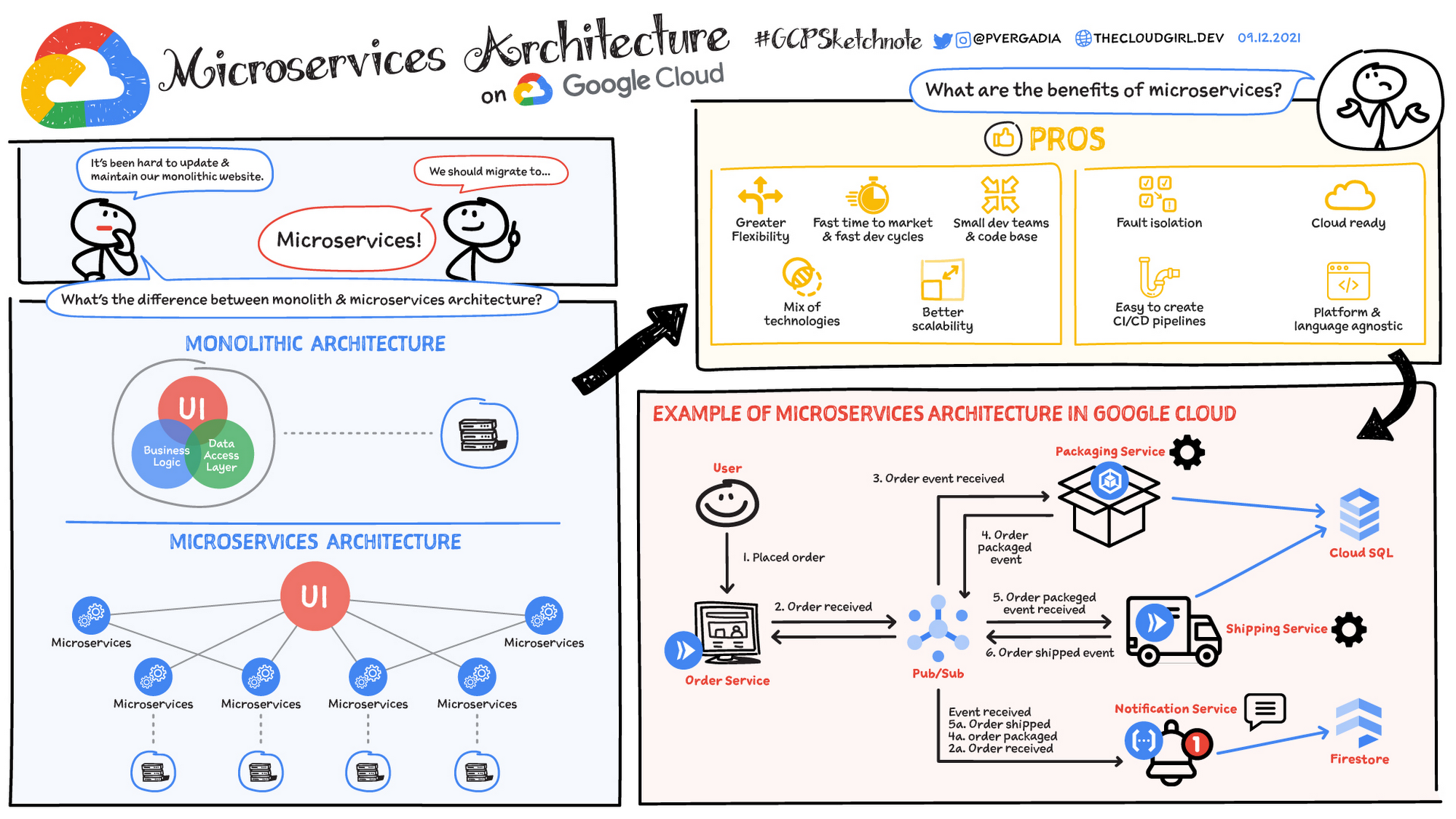什麼是微服務架構?
微服務架構 (通常簡稱為「微服務」) 是一種應用程式開發架構類型。微服務可讓大型應用程式分解為較小的獨立元件,每個元件都有各自負責的範圍。為了服務單一的使用者要求,微服務型應用程式可呼叫許多內部微服務來建構其回應。
容器正是一個完全符合微服務架構條件的例子,如果使用容器,您就能專心開發服務,不必擔心依附元件。現代的雲端原生應用程式通常是透過容器以微服務的形式建構而成。
瞭解 Google Kubernetes Engine 如何協助您使用容器建立微服務型應用程式。
準備好了嗎?新客戶可以獲得價值 $300 美元的免費抵免額,盡情試用 Google Cloud 的各項功能。
微服務架構的定義
微服務架構是一種應用程式架構,在這種架構之下,應用程式是以一組服務的形式開發而成。這種架構能讓您獨立開發、部署及維護微服務架構圖和服務。
在微服務架構中,每項微服務都是為了容納某個應用程式功能及處理獨立工作而建構的單一服務。每個微服務都會透過簡單的介面與其他服務通訊,以解決業務問題。
單體與微服務架構的比較
傳統的單體式應用程式是單一整合單元的形式建構而成。所有元件緊密結合,共用資源和資料。這可能會導致應用程式擴充、部署和維護作業出現問題,尤其現在應用程式越來越複雜。相較之下,微服務架構會將應用程式分解為一組小型獨立服務。每個微服務都是獨立的,各有自己的程式碼、資料和依附元件。這種做法有幾個潛在優點:
- 擴充性更高:可視個別微服務的需求獨立調度資源
- 靈活性更好:微服務可獨立開發、部署及更新,因此可加快發布週期
- 韌性更佳:如果某個微服務發生故障,不一定會影響整個應用程式
- 技術多元:微服務的靈活性讓團隊能為每項服務使用最合適的技術
產業範例
許多不同產業的組織都採用了微服務架構,以解決特定業務難題並推動創新。範例如下:
- 電子商務:許多電子商務平台會使用微服務來管理營運的各個面向,例如產品目錄、購物車、訂單處理程序和客戶帳戶。這有助於他們根據需求擴充個別服務、提供個人化客戶體驗,以及快速部署新功能。
- 串流服務:串流服務通常會使用微服務來處理影片編碼、內容傳遞、使用者驗證和推薦引擎等工作。這有助於同時為數百萬名使用者提供優質串流體驗。
- 金融服務:金融機構使用微服務來管理業務的各個層面,例如偵測詐欺、處理付款和管理風險。這有助於他們迅速因應不斷變化的市場情況、提升安全性,以及遵循法規要求。
微服務架構的用途有哪些?
微服務通常用於加快應用程式的開發速度。使用 Java 建立的微服務架構很常見,尤其是 Spring Boot 架構。此外,微服務也常被拿來與服務導向架構做比較。這兩種架構的目標一樣都是將單體式應用程式分割為多個小型元件,但兩者採用的方法不同。 以下列舉幾個微服務架構範例:
網站遷移
網站遷移
託管於單體式平台上的複雜網站可遷移至雲端型及容器型微服務平台。
媒體內容
媒體內容
在採用微服務架構的情況下,您可以將圖片和影片資產儲存在可擴充的物件儲存系統中,並將這些資產直接提供給網頁應用程式或行動應用程式。
交易和發票
交易和發票
付款處理和訂購可分離成獨立的服務單元,這樣的話如果應付憑據服務無法運作,系統仍會持續接受付款。
資料處理
資料處理
微服務平台可以為現有的模組化資料處理服務提供雲端支援。












